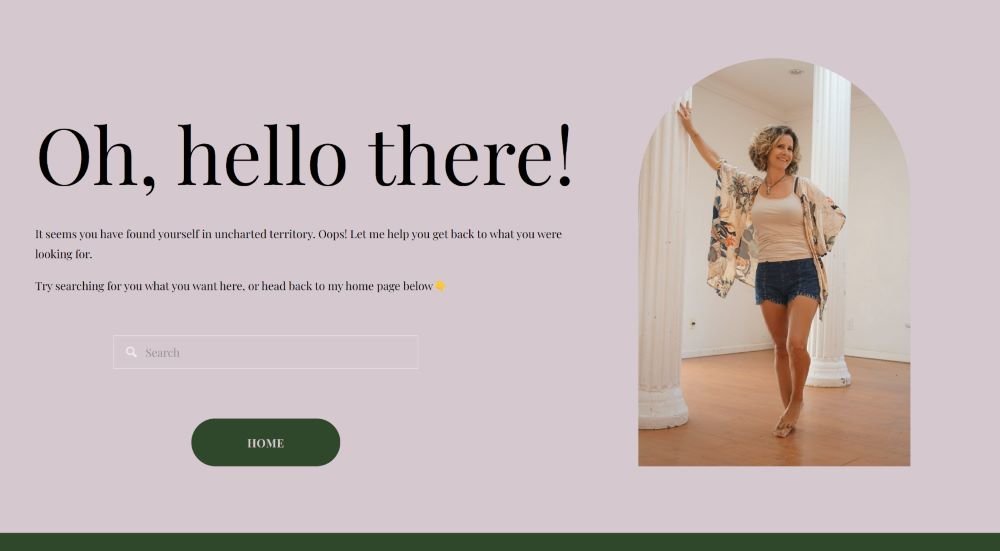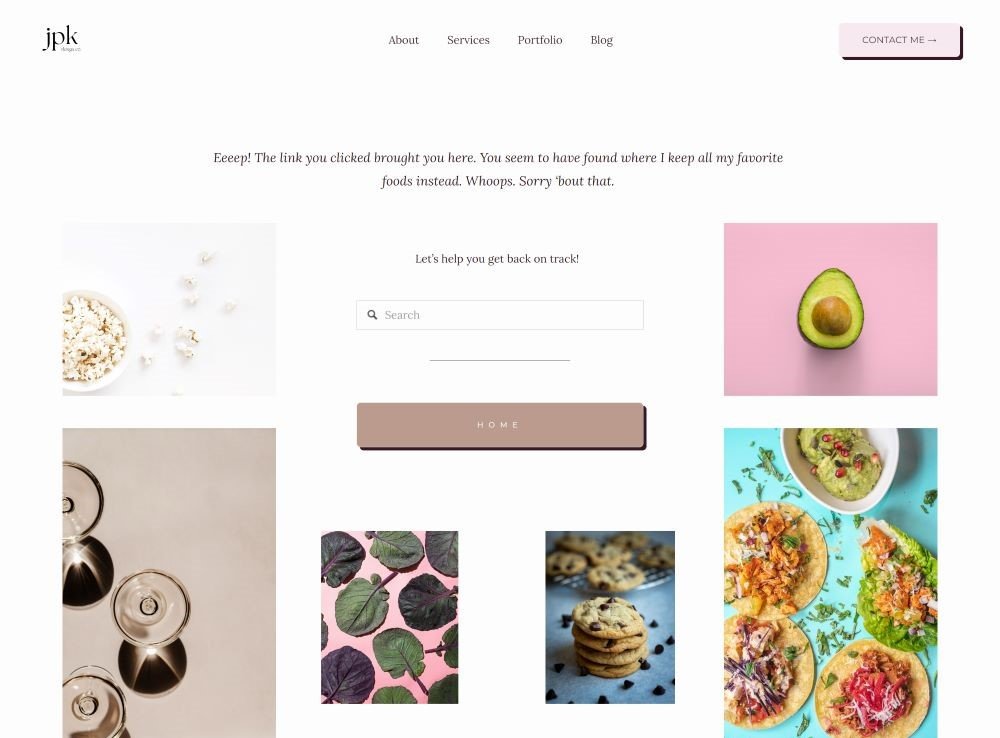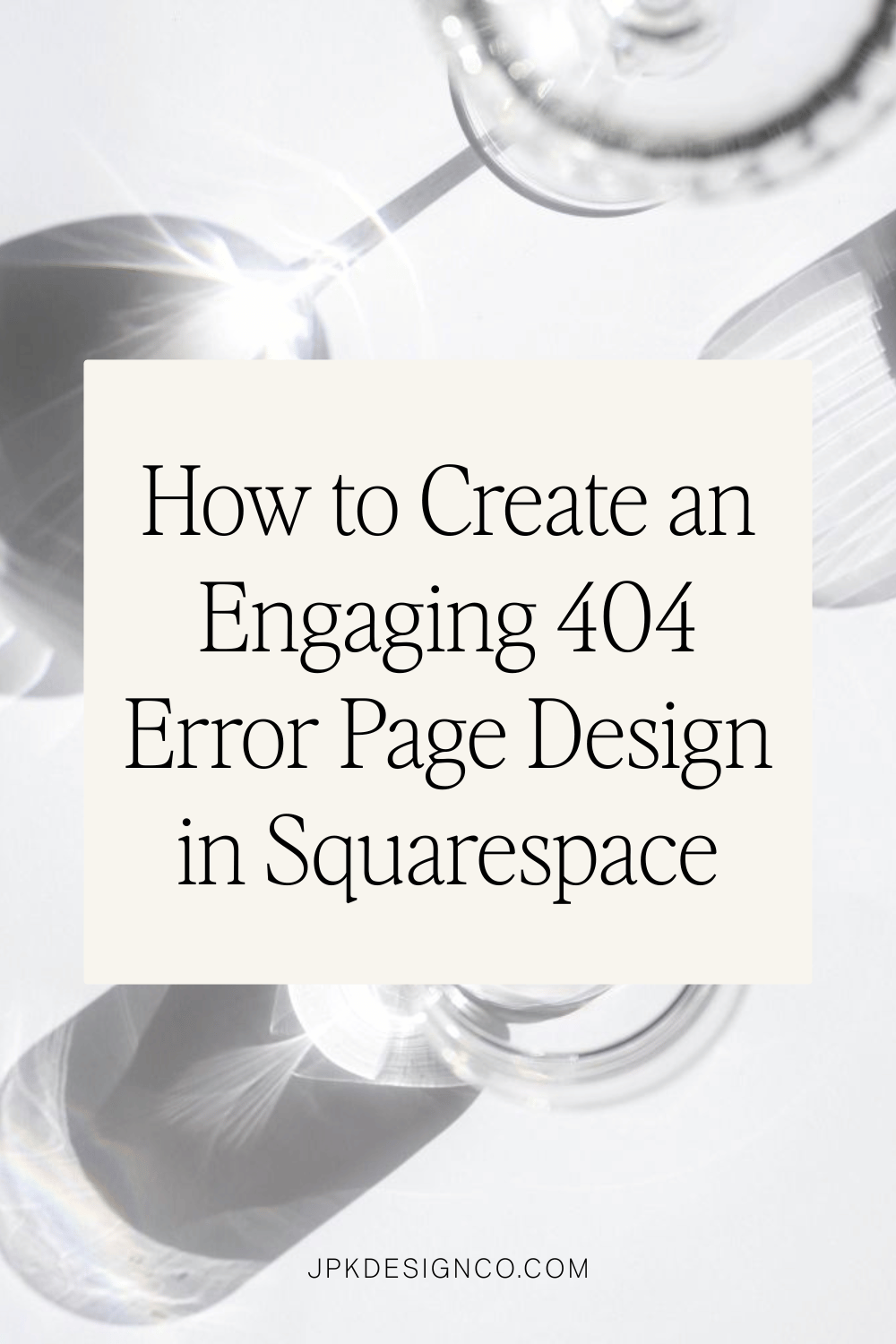How to Create an Engaging 404 Error Page Design in Squarespace
Say someone finds your website through Google, gets excited about working with you, but clicks on a broken link and lands on a boring "Page Not Found" screen.
What do they do? Hit the back button and find your competitor instead.
Ouch.
But with a little creativity, you can turn those "oops" moments into opportunities to show off your personality and keep visitors exploring your site instead of bouncing to someone else's.
Let me show you how to design a 404 error page that people might even enjoy landing on!
What should be on a 404 error page?
When it comes to website design, one element that gets ignored is the 404 error page. While encountering a "Page Not Found" error can be frustrating, a well-designed custom 404 page can completely flip that experience.
If you want detailed steps on HOW to create a custom 404 error page in Squarespace, here’s a blog post about that.
But first, let's talk strategy.
But first — what is a 404 Error Page?
A 404 error page is also known as a "Not Found" page on a website.
Technical stuff: It comes with an HTTP status code "404" that tells browsers the requested page isn't available.
How do people end up on your 404 page?
Broken or outdated links: When you move things around, delete pages, or reorganize your site, old links become dead ends. Click on these links? Hello, 404 page.
Mistyped URLs: Your visitors might accidentally mistype a URL in the address bar. For example, typing 'jpkdesignco.com/blogg' instead of 'jpkdesignco.com/blog' will land them on a 404 page.
External sources: Links from other websites, Google search results, or social media platforms can lead to 404 pages if the linked page no longer exists or if someone types the link incorrectly.
The good news is you have complete control over what happens next.
Why Customize Your 404 Page?
Customizing your 404 page isn’t just about slapping on a fancy fix to a dead end. It’s about flipping the script and turning those ‘oops’ moments into opportunities.
Here are five great reasons to make sure a customized 404 page is part of your website design, with examples shown below this section:
Five Reasons to Customize Your 404 Error Page Design
01. Keep Visitors Engaged (Instead of Losing Them)
A well-designed 404 page can engage visitors and make them feel more connected to your brand. By adding personality through images, interactive features, or helpful content, you turn a frustrating error into an opportunity to entertain.
Example: 20th Century Studios features rotating stills from their movies with funny captions. Google "20th Century Studios 404" and see what pops up!
02. Show Your Brand Personality
Your 404 page is prime real estate for showing who you are. By incorporating your brand colors, fonts, and voice, you reinforce your brand identity and make the error page feel like a natural part of your website.
Example: The Atlantic Magazine's 404 page stays perfectly on brand with their editorial style and sophisticated design.
03. Guide People Where They Need to Go
A custom 404 page serves as a helpful guide for lost visitors. Include a search bar to help people find what they're looking for, plus clear navigation options like links to popular pages or your homepage.
Example: Airbnb includes helpful links and a cute animation of ice cream falling off a cone. It's helpful AND memorable.
04. Communicate Clearly (Without Being Boring)
Generic 404 pages don't explain what went wrong, which leads to confusion and frustration. Your custom page can offer clear, friendly error messages and helpful suggestions for finding what visitors need.
PRO TIP: Some websites include a small form on their 404 page asking visitors what link they were looking for so they can fix it. Smart!
Example: Southwest Airlines' 404 page offers several ways to help visitors get where they're going, plus some fun airline humor.
05. Keep People on Your Site (Instead of Sending Them to Competitors)
When visitors hit a 404 error, their first instinct is to leave and find what they need elsewhere. A custom 404 page gives you a chance to redirect them to valuable content, encourage exploration, or even offer incentives to stick around.
Example: Kickstarter's 404 page offers a "randomized" project to back, turning a dead end into discovery.
404 Error Page Examples
Tips for Designing an Effective 404 Page
Now, let's explore some tips to help you create an effective and user-friendly 404 page design.
Keep it visually appealing
Design an an on-brand 404 page using graphics that grab attention, on-brand images that get a response (humor works great!), and your brand colors and fonts. Make sure it looks like it belongs on your website.
Make it informative, but concise
Provide clear error messaging in a concise manner. Avoid overwhelming your website visitors with lengthy explanations (pssst - just like the rest of your website design!). Use language that is easy to understand and quickly conveys that the page they're looking for cannot be found. You want to quickly guide them back to a useful page on your website.
Provide useful navigation options
Add a search bar so visitors can look for what they originally wanted. Include links to your most popular pages, blog posts, or a sitemap to help them find relevant content.
Add a touch of humor or creativity
Use humor or creativity in your 404 page to alleviate and potential user frustration and leave a positive impression. It’s important to make sure your humor or creativity aligns with your brand's tone and target audience though!
The key is turning a potentially negative experience into something that makes visitors want to explore more of your site.
And here’s what NOT to include on your 404 page:
Generic "Page Not Found" text with no personality
Dead ends with no navigation options
Links that also lead to 404 pages (check your links!)
Humor that doesn't match your brand voice
Squarespace 404 Error Page ExamplesHere are three 404 Error Pages I designed for my clients - plus an older version of mine:
Why you need a custom 404 Error Page, along with a collection of 404 Error pages to inspire you to create yours. You don’t need to rewrite the book or be someone you’re not - just bring a little of your own unique personality and/or a little humor or creativity, and you’ll be off to the races!










